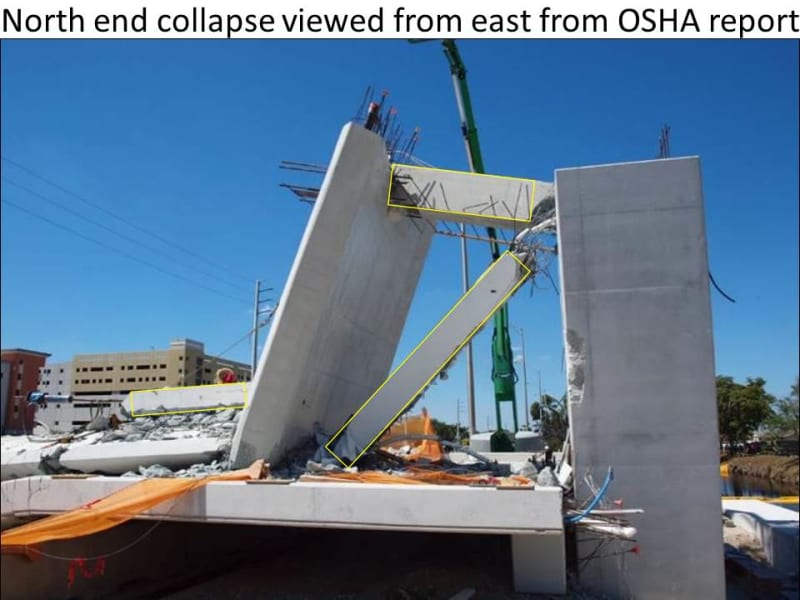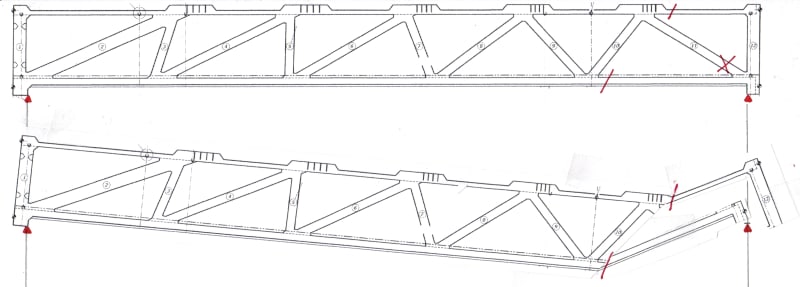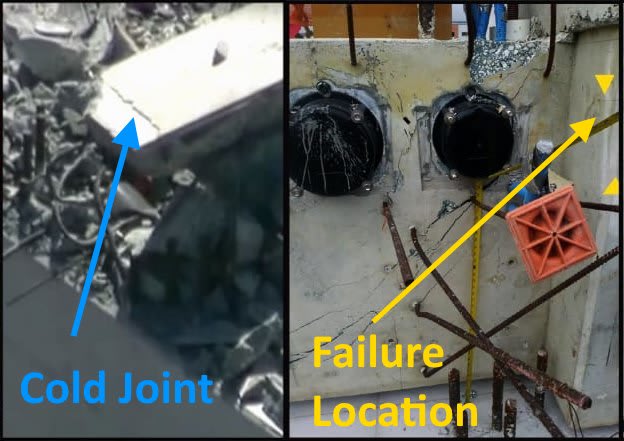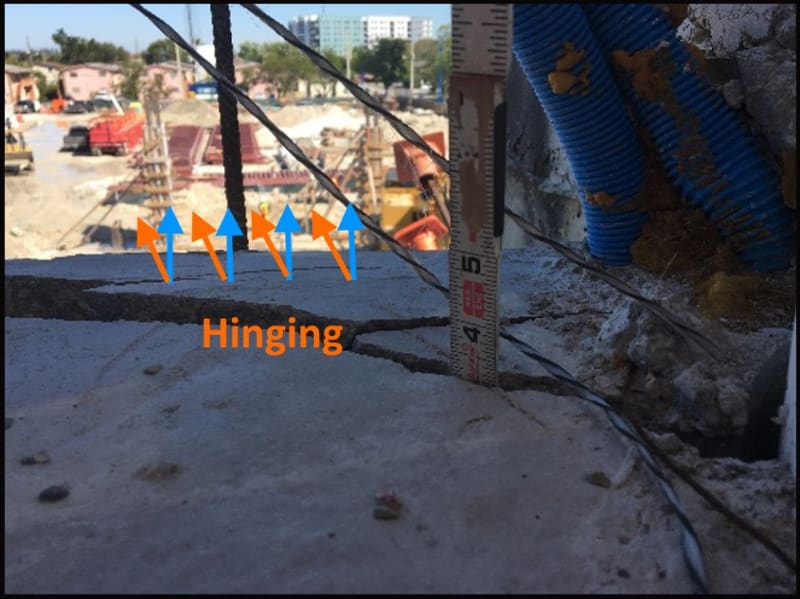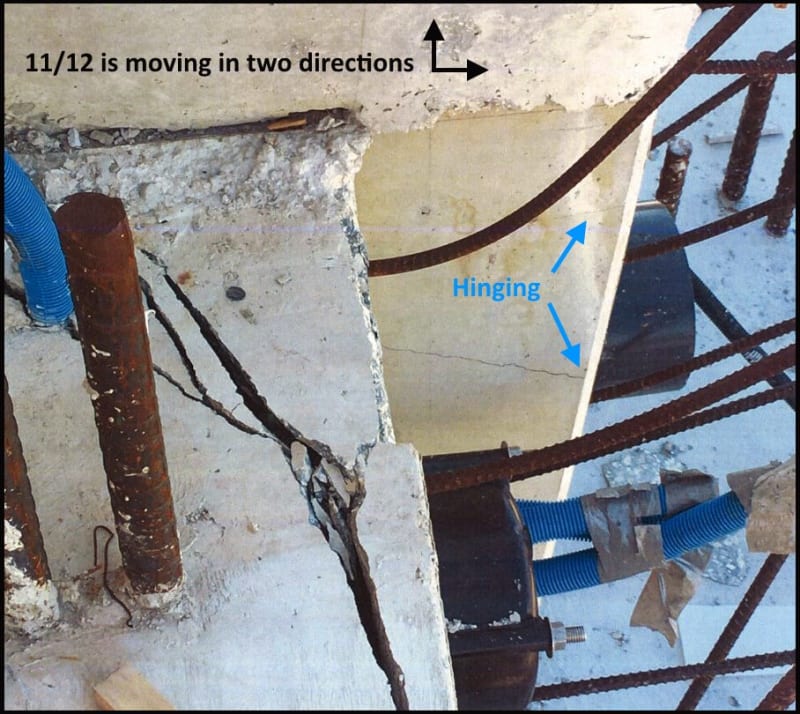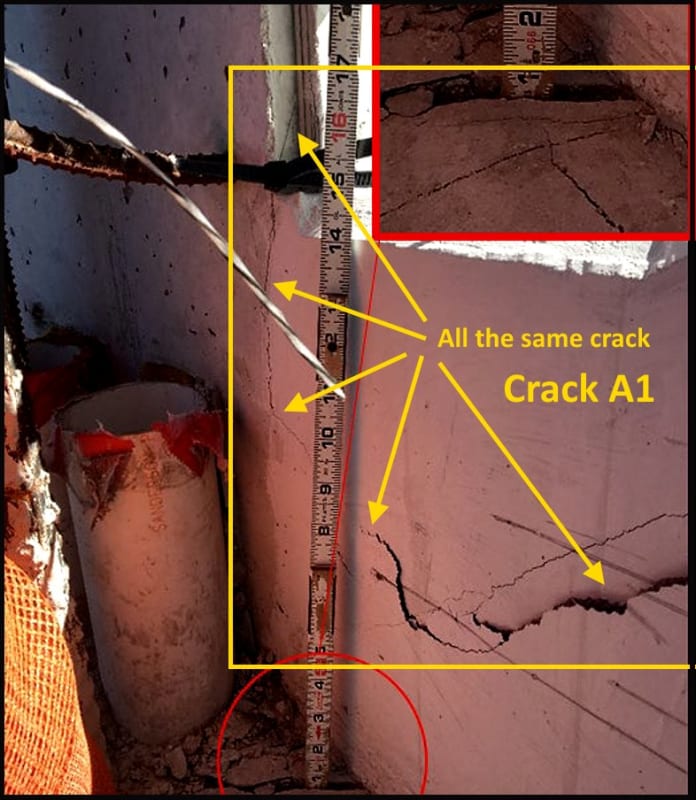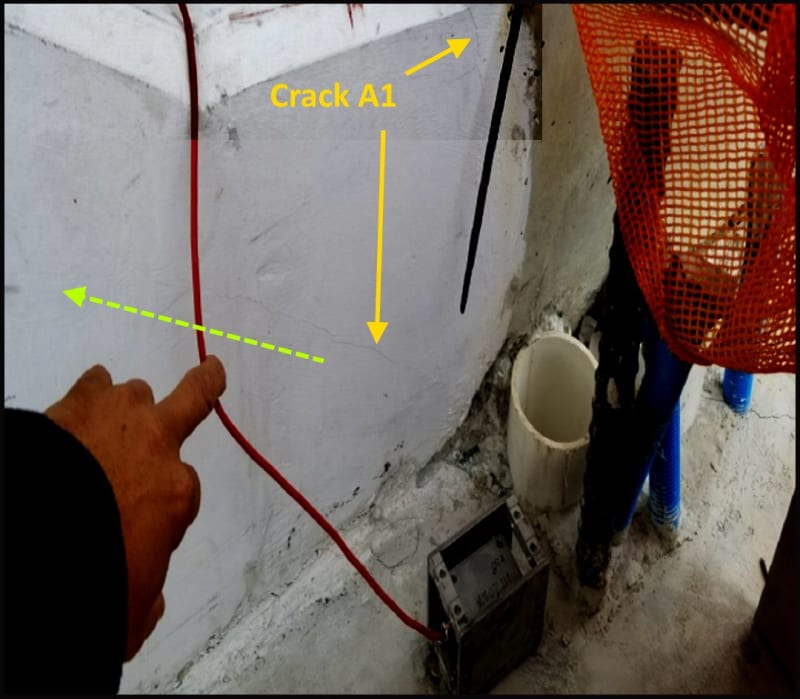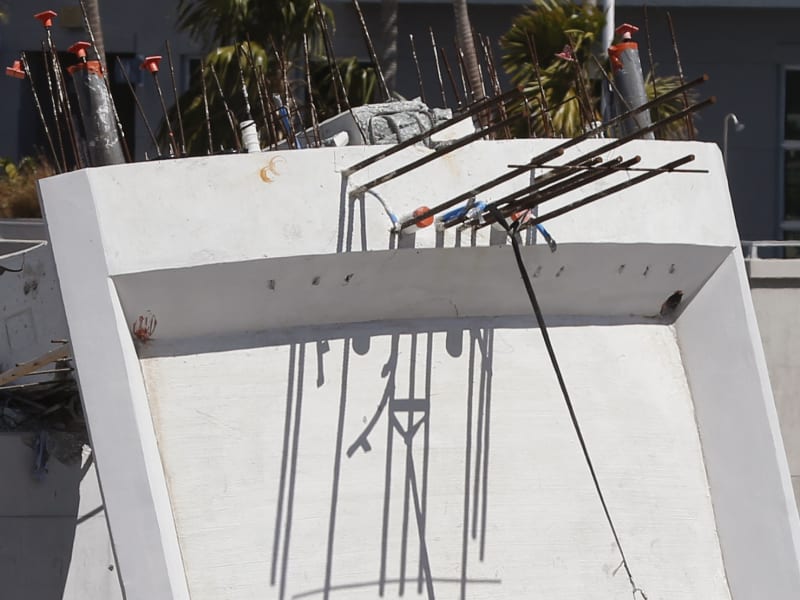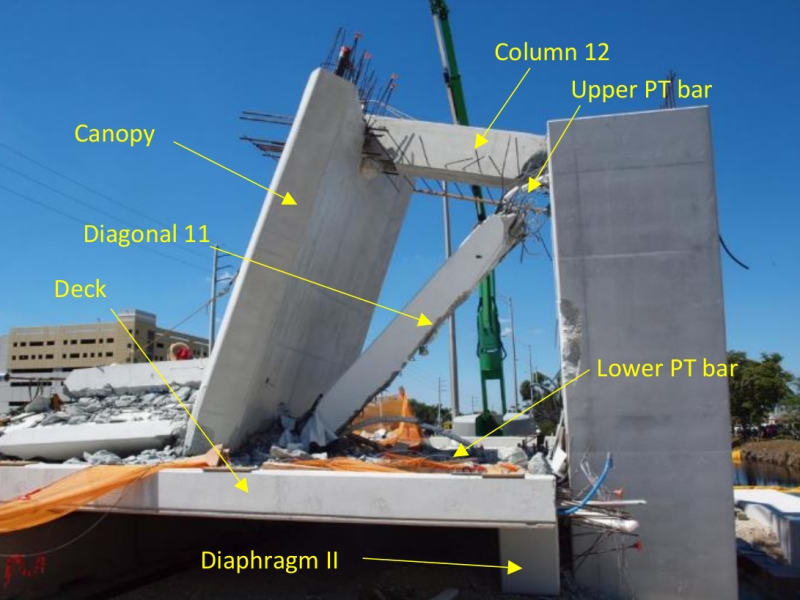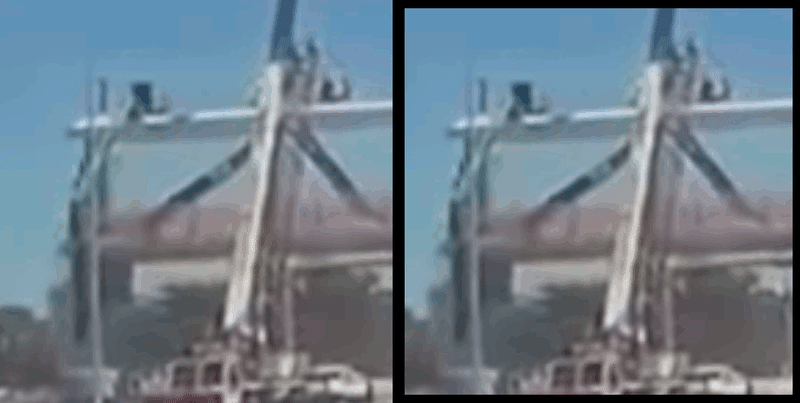The measurement by Tomfh of 17'6" agrees well with the photo documentation.
Another view of #12
Following up on the last post by Sym P. le (Mechanical) - More and more it looks like the failure was purely the 11/12 anchor zone of the Upper PT bar. That the fractured mass of concrete & rebar in front of the anchor plate yielded. It is certainly true that prior to work, to retension the PT bars in #11, that all the rebar in the 11/12 node was resisting the weight of the bridge but when the front of the 11/12 node failed towards the south, #12 was momentarily relieved of performing any work other than self weight & the canopy.
The base of 12 was already hinging upwards & outwards before the collapse. That is why their are cracks in the base of 12 before the collapse. Because it is bending at the deck/diaphragm elevation.
It is hard to perceive from the photos available but I think it is very likely, that the #11 upper PT bar and the concrete surrounding it, had failed completely during detensioning and that the only thing holding the bridge in place was Rebar & mechanical interlock of the broken pieces of concrete. That isn't to say that there wasn't progressive cracking but that the concrete was now little more that a pinned & caged rock formation, holding up a bridge. The more you group the cracks into a whole, the more it becomes clear #12 was lifted slightly during the initial cracking at the time of detensioning.
The deck and diaphragm haven't moved but the failed concrete still homogeneous to 12 has lifted. (Rotation)
It appears more & more, to my my mind, that the front of the 11/12 node failed to the south.
This kind of failure, if accurate, sort of raises the issue as to the procedure used to detension the PT bars. I've managed too many jobs to rule out and "Oh Crap!" moment. Most jobs have a number of them. It is just the nature of the people doing the work. You can give people all the training in the world but there are still instances, where if you don't spell it out for them, they revert to stupid. This is where I go back to Member 11.
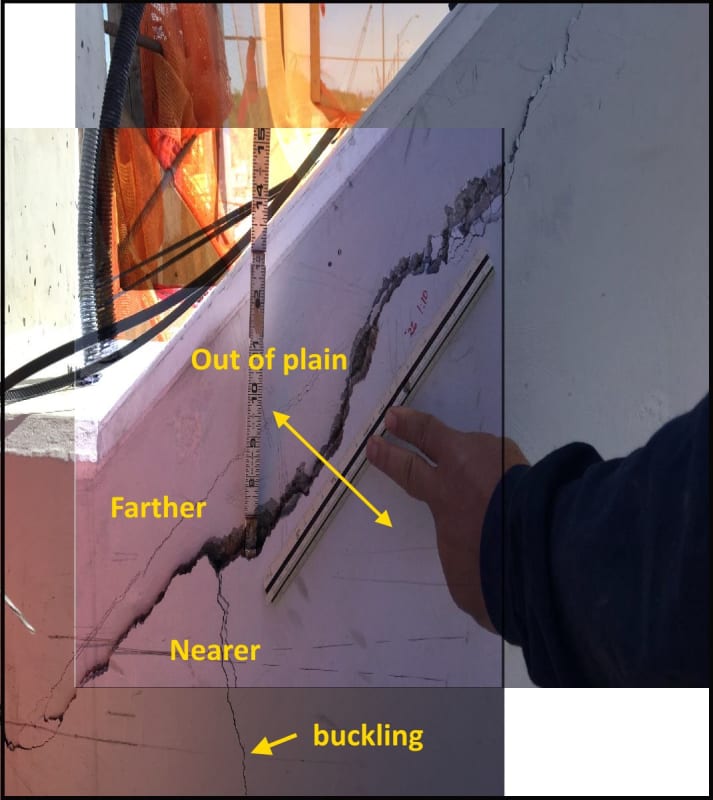
Here in California, residential post-tensioned concrete has warning signs posted in the garage & stamped into the concrete at the point were the garage floor meets the driveway. It is just one example of the extreme hazards associated with Prestressed & Post-Tensioned concrete. The FIU Bridge plans & Structural Groups, VSL shop drawings are all loaded with Caution & Danger warnings. The work area hazard & safe zones for PT work are defined. Likewise the majority of Figg's work is Post-tensioning structure, including cantilevered segmental bridge work. Does anybody really believe that Post-Tensioning Institute or PCI would ever suggest that is was OKAY to tension a cracked concrete member? VSL should never have agreed to retension #11 and should have known better. Figg was just completely out of their minds. BPA was out of their depth but should have also understood that retensioning was a harebrained & dangerous idea. It begs the question whether firms offering Inspection services should be required to have one member that has been through some failure analysis course work, so that when things go sideways, they can step up.

